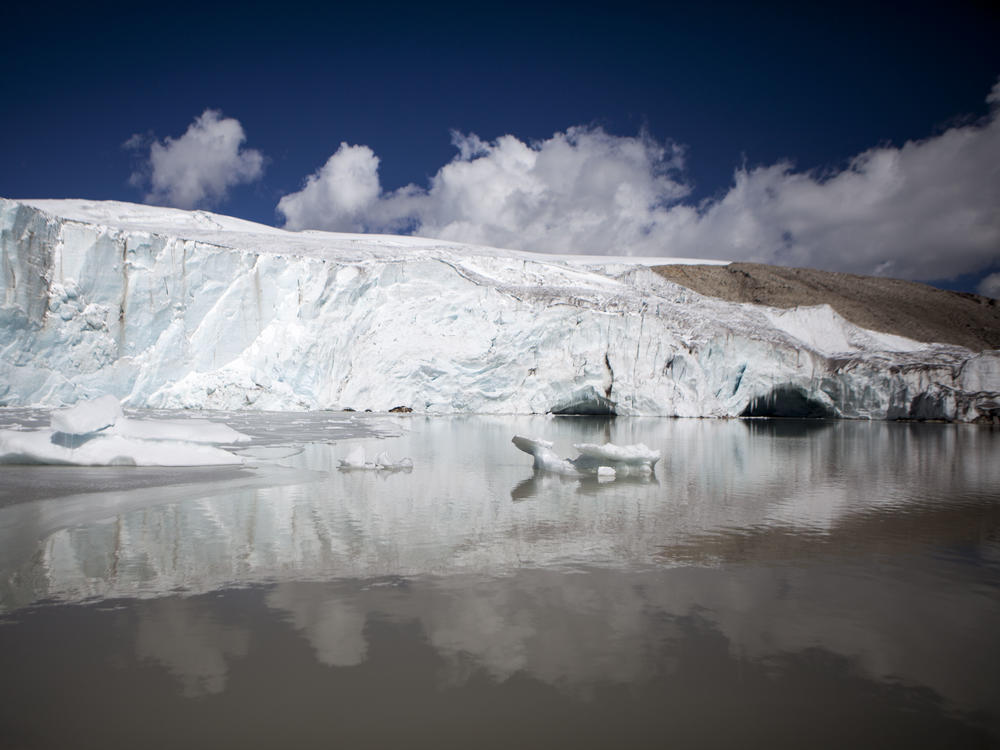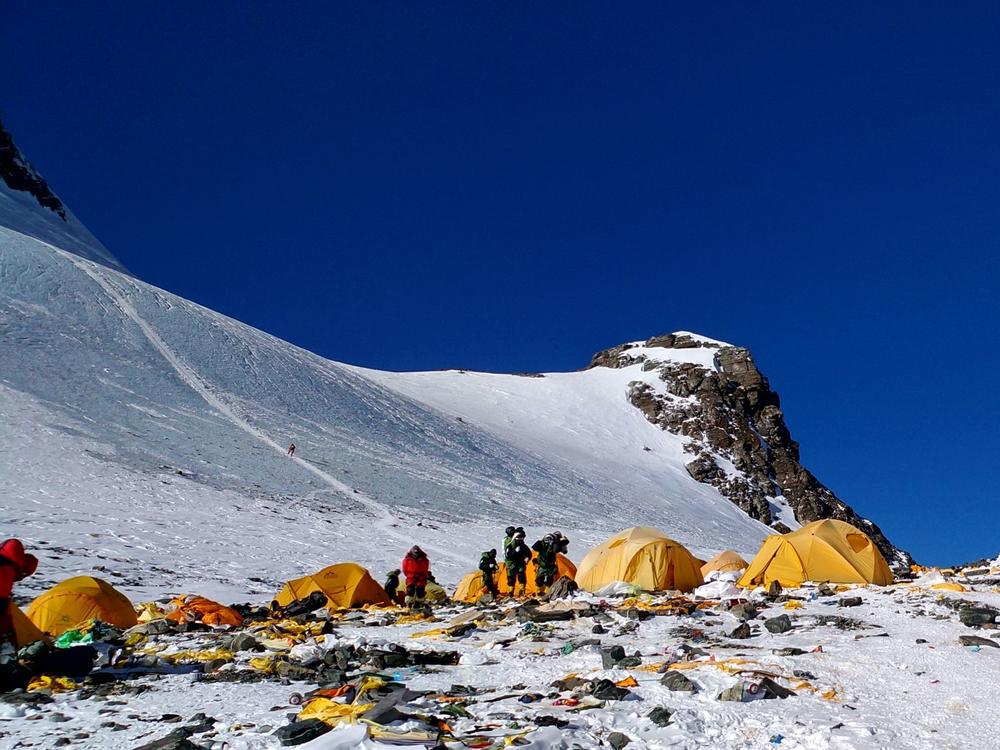Section Branding
Header Content
Glaciers are shrinking fast. Scientists are rushing to figure out how fast
Primary Content
Glaciers all over the world are shrinking more quickly than previously thought with implications for more than one billion people who rely on the ice for water, power and food, according to a trio of new climate studies.
Glaciers are massive ice rivers that exist over land, including in all the world's major mountain ranges, and in Greenland and Antarctica. As the Earth heats up due to climate change, glaciers are melting. The new research suggests that the world's glaciers are disappearing more quickly than scientists previously estimated, and they could contain up to 20% less water than scientists had thought.
"Mountains with glaciers on them – the Andes, the Himalayas, many others around the world – are a remarkable source for storage of water," says Paul Mayewski, a glaciologist at the University of Maine. "That stored water is around and available, particularly during the drier seasons," he says, which is extra important as climate change drives more extreme droughts.
If glaciers are smaller than previously thought, that means humanity is that much closer to a future where more than a billion people who rely on glaciers will need an alternative source of water. Rapidly melting glaciers are also dangerous, because they can also cause catastrophic floods and landslides, as happened in northern India in 2021.
For that reason, it's important to know exactly how rapidly glaciers are disappearing. But painting a comprehensive picture of glaciers is difficult: they are mostly located in hard-to-reach places, and there are thousands of them all over the world.
"You would be surprised how little we know about mountain glaciers, even though we often rely on them for daily life," says Mathieu Morlighem, a glaciologist at Dartmouth University and an author of a study published this week that includes the most accurate portrait ever of global mountain glaciers.
Up until now, the best estimates of how much water is trapped in mountain glaciers were based on a crude method that considered surface area but not depth. That would be like assuming that the lake behind the Hoover Dam contains the same amount of water as a very shallow lake with the same footprint.
The new study uses satellite images to estimate ice depth, and finds there is about 20% less water trapped in mountain glaciers than previously thought.
That finding is backed up by recent research by scientists at the University of Ottawa. They examined satellite images of about 1,700 glaciers in the Northern Hemisphere, including in Canada, the U.S., Greenland and Russia. They found that 85% of the glaciers retreated between 2000 and 2020.
A third study, published by scientists including Mayewski and a team of mountaineers, looked specifically at one famous mountain glacier: the expanse of ice at the top of Mount Everest, known as South Col glacier. South Col is located at extraordinarily high altitude – above 26,000 feet – where temperatures do not get warm enough for ice to melt.
But that hasn't stopped the glacier from shrinking, the scientists found. That's because the air at the top of Everest is getting warmer as the climate changes. The warmer air can hold more moisture, even if temperatures remain below freezing. As wind scours the ice, the frozen water transforms into vapor and that moisture is sucked up by the warmer air.
That process has accelerated so dramatically that South Col glacier is losing 10 years worth of ice accumulation every year, and is on track to disappear within about 30 years, Mayewski says.
Ultimately, melting glaciers affects everyone who lives near a coast, too: glacial melt is responsible for about one third of the sea level rise that has occurred so far due to global warming.
Scientists previously predicted that further melting of mountain glaciers would contribute an additional 13 inches or so to global sea levels in the future. The new research revises that down to about 10 inches.
"This may sound like a big number, but it's very small compared to how much sea level rise we're predicting at the end of the century," Morlighem says. By far the largest driver of future sea level rise is the melting of enormous ice caps over Greenland and Antarctica.
Copyright 2022 NPR. To see more, visit https://www.npr.org.


